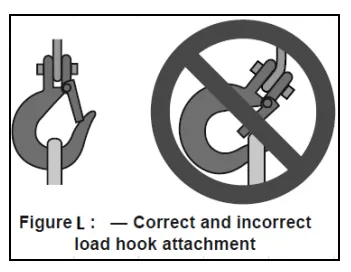crane girder and gantry girder
Understanding Crane Girder and Gantry Girder Key Components in Material Handling
In the realm of material handling systems, cranes play a pivotal role in enhancing efficiency and safety in various industries. Among the critical components of these cranes are the crane girder and gantry girder. These structural elements form the backbone of lifting mechanisms, supporting the load and enabling the movement of heavy materials in factories, warehouses, construction sites, and ports. This article delves into the definition, functions, and characteristics of crane girders and gantry girders, providing insights into their importance in the material handling industry.
What is a Crane Girder?
A crane girder is a principal horizontal structural element of a crane that supports the hoisting mechanism, which is responsible for lifting and moving loads. Typically made from steel or other high-strength materials, crane girders are designed to withstand substantial vertical and lateral forces while maintaining stability. They are integral to different types of cranes, including overhead cranes, bridge cranes, and light cranes.
The girder characteristics can vary significantly depending on the type of crane and its intended application. For instance, in an overhead crane system, the main girder is usually supported by end trucks that facilitate horizontal movement along the crane's runway. A well-designed crane girder ensures optimal load distribution, minimizes vibrations, and provides a safe operational environment.
The Function of Gantry Girders
Gantry girders are a specific type of girder used in gantry cranes, which are distinguished by their ability to move along rails on the ground. Unlike traditional overhead cranes, gantry cranes typically consist of a main horizontal beam (the gantry girder) supported by vertical legs that move on fixed tracks. This design lends itself well to outdoor applications and environments where flexibility in positioning is essential, such as in shipping yards, shipbuilding, and large construction sites.
The gantry girder performs similar functions to the crane girder, as it is responsible for supporting the hoisting equipment and enabling the movement of heavy loads. However, the structural design of gantry girders must account for additional factors such as ground stability and support from the legs, leading to distinctive engineering specifications.
crane girder and gantry girder

Structural Considerations
The design and construction of both crane and gantry girders are critical to the overall safety and performance of the lifting systems. Several factors influence their design, including the expected load capacity, span length, environmental conditions, and frequency of use. Engineers must conduct thorough analysis and testing to ensure that girders can handle dynamic loads without excessive deflection or failure.
One significant aspect of girder design is selecting the appropriate material. Steel is the most commonly used material due to its high strength-to-weight ratio, durability, and ability to be molded into various shapes. However, advancements in materials science have led to the adoption of other materials like aluminum and composites in certain applications, especially where weight and corrosion resistance are critical.
Safety and Maintenance
Safety is paramount when working with cranes, and girder integrity is a crucial part of that equation. Regular inspections and maintenance are required to prevent wear and tear that can compromise the structural integrity of the girders. Issues such as corrosion, weld fatigue, and potential deformations must be proactively addressed to ensure safe operation. Operators should be trained to recognize the signs of potential failure and adhere to established safety protocols.
Conclusion
In summary, crane girders and gantry girders serve as essential components of lifting systems, facilitating efficient and safe material handling across various industries. Their structural design and material selection directly impact the effectiveness of cranes in performing heavy lift operations. As industries continue to evolve and grow, the ongoing development and enhancement of girder technology will remain a focal point in advancing material handling practices. Understanding these components not only aids engineers and operators in their roles but also contributes to fostering a safer and more efficient working environment.
-
Portable 2000 lb Gantry Crane | Heavy-Duty & AdjustableNewsAug.30,2025
-
Versatile Lifting Solutions with Gantry and Overhead CranesNewsAug.29,2025
-
The Versatile Mobile Gantry Crane SolutionNewsAug.29,2025
-
Reliable Movement with Heavy Machinery Skates and RollersNewsAug.29,2025
-
Reliable Lifting Performance with 2000 lb Gantry Crane and 2 Ton Overhead SystemsNewsAug.29,2025
-
Maximize Lifting Efficiency with PML Magnetic LiftersNewsAug.29,2025
-
Efficient Relocation Starts with Reliable Machinery MoversNewsAug.29,2025
